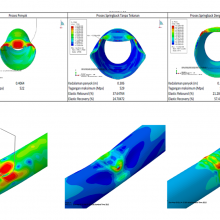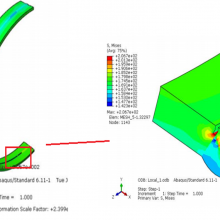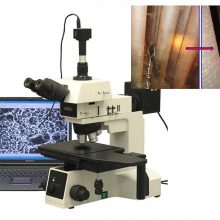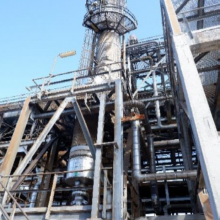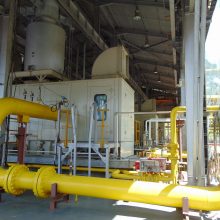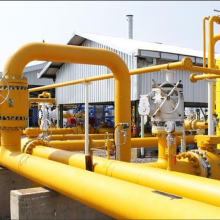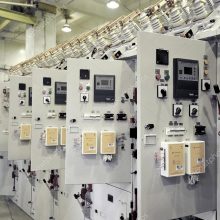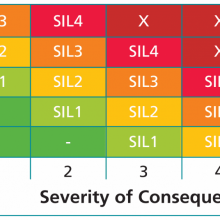AIMS is a management system for ensuring the integrity of assets throughout the life cycle of the assets. AIMS can provide the foundation for a safe, reliable facility that minimizes threats to the workforce, the public and the environment. Effective AIMS is also consistent with good business practices.
AIMS is implemented to manage the risks to the acceptable levels throughout the whole lifecycle of the assets. Together with process safety, reliability program and other protocols help the Company to achieve the operation excellence.
RBI is a risk assessment and management process that is focused on loss of containment of pressurized system of processing plant caused by material degradation and damage mechanism developed overtime. The risks are then managed primarily through equipment inspection.
Learn more about our Risk Performa
Fitness-for-services or fitness-for-purpose assessment is detail calculation and analysis carried out using best practices industrial standards or codes to evaluate the structural integrity on an asset, equipment or component, with or without having any defect.
The FFS assessment is used to determine whether the equipment or component is still suitable and safe for its intended use or not. It helps the engineers and management to run-repair-replace or downrate decision making on any asset based on a detailed technical assessment.
Some weldment may contain crack-like-defect that exceeding maximum tolerable size based on construction standard codes or the workmanship. However, the condition does not necessarily means that the structure or component is at risk of failure.
ECA is a detail mechanical calculation based on fracture mechanics method to evaluate the defect of component whether it endanger the structural integrity or not. Like FFS assessment, ECA is used to determine whether the equipment or component is still suitable and safe for its intended function or not, and if it is safe for how long (the remaining life).
FEA is a computer aided engineering tool to analysed how a design reacts or response under actual conditions. FEA is useful for structural integrity analysis such as piping, pipeline, pressure vessel, storage tanks, turbine components, cranes, etc. It involves static, dynamic or fatigue analysis, vibration, and thermal analysis. Beside at design stage, FEA is also widely used for FFS and ECA application.
Root cause analysis (RCA) is the process of identifying and determining the systemic cause of equipment failure lead to an incident or accident. RCA is the critical step to determine the root cause(s) and contributing cause(s) in maintenance management for finding and resolving any mechanical problems instead of just fixing the symptoms. RCA is conducted to prevent similar occurrence in the future.
Forensic engineering is essentially a RCA program used for litigation support. The goal of such a program is to positively identify the sequence of events leading to ultimate failure and accident, and bring the responsible person(s) or parties to justice in the courts of law.
RAM study is performed to evaluate the reliability, availability and maintainability quantitively of the equipment, system, or facility of the process plant. It is used to determine the lowest reliability or maintainability contributor on the availability of the individual equipment or the whole system.
In addition to RBI and RCM study, RAM study is commonly performed to prevent unavailability or unplanned shut down of the plant, thereby, the inspection and maintenance plan can properly be made.
RCM is a process to identify the policies which must be implemented to manage failure mode which could cause the functional failure of component, equipment or any physical asset in a given operational context. It process defines system boundaries and identify system functions, functional failures, and likely failure modes, cause and effect for equipment in a specific operating context.
RCM produce what maintenance task to perform to assure the applicable and cost effective management strategy to reduce the functional failure and associated risk in present operating context.
PIMS is planning, organizing, executing and controlling all pipeline risk and integrity, through inspection and monitoring, and maintenance program, in order to operate the pipeline safely and reliably at the most cost effective way.
PIMS is a process that includes inspection of the pipeline, evaluating the indications resulting from the inspections using a variety of techniques, then it is followed by characterizing the anomalies or defects type and severity, and determining the resulting integrity of the pipeline.
PIMS is implemented to manage the risks to the acceptable levels throughout the whole lifecycle of the pipelines.
It is important to maintain the structural integrity of oil and gas offshore platform in order to make sure that the platform, where the processing plant is located, is safe to operate throughout its design life and beyond. For obvious reasons, today, risk based under water inspection (RBUI) has gradually replaced the time based inspection.
The weakest member of the structure can be determined by FEA using push over and fatigue analysis, by introducing various loading system (magnitude and direction), and hence the possible collapse and fatigue life could be estimated. Accordingly, those critical members, in terms of reserve strength ratio (RSR) value and fatigue life, would receive the most detail and priority of the inspection plan. Should any weakness found in the structure, the reinforcement can also be planned in more cost effective way.
Electrical Integrity Management is a helps ensure the safe and reliable operation of electrical assets in various industries, including oil and gas, power generation, and manufacturing. It involves the systematic evaluation of the condition and performance of electrical equipment, such as transformers and switchgear to identify potential issues and prevent equipment failures. Our Electrical Integrity Management service is performed by experienced and qualified professionals, who use advanced diagnostic techniques and tools to detect and analyze any potential problems, and provide effective solutions to optimize equipment performance, reduce downtime, and ensure compliance with relevant regulations and standards.
Energy Audit helps businesses and organizations identify opportunities to reduce energy consumption, improve efficiency, and save money. It involves a detailed evaluation of energy usage patterns, building systems, and processes to identify areas where energy can be conserved or optimized. We provide a comprehensive report outlining recommended energy efficiency measures, along with estimated savings and payback periods, to help our clients make informed decisions about how to reduce their energy consumption and improve their bottom line.
SIL Verification evaluates the effectiveness of safety systems in preventing hazardous events in industrial processes. We use the latest methods to ensure compliance with IEC 61508, IEC 61511, and other regulations, helping to minimize the risk of accidents, injuries, and environmental damage.



